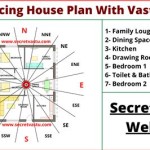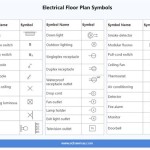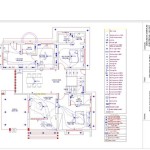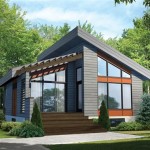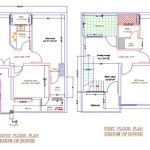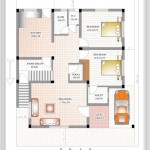Self-Sufficient Houses and Plans: A Comprehensive Overview
Self-sufficient housing represents a paradigm shift in residential design, prioritizing resource independence and minimizing reliance on conventional infrastructure. This concept encompasses various elements, including energy generation, water management, food production, and waste processing, all integrated into a cohesive and sustainable living environment. Planning a self-sufficient house requires careful consideration of numerous factors, from site selection and building materials to technological integration and lifestyle adjustments.
The growing interest in self-sufficient housing stems from a convergence of factors, including increasing environmental awareness, concerns about rising energy and utility costs, and a desire for greater personal autonomy. Individuals seek to reduce their carbon footprint, mitigate the impact of fluctuating energy markets, and gain control over their resource consumption. This article will explore the key aspects of self-sufficient house design and planning, highlighting the critical considerations for those seeking to embrace this innovative approach to living.
Energy Generation Strategies for Self-Sufficiency
One of the cornerstones of self-sufficient housing is the independent generation of electricity. Solar photovoltaic (PV) systems are the most prevalent technology, converting sunlight directly into electricity. The size and configuration of the solar array will depend on the energy needs of the household, the available sunlight hours, and the homeowner’s budget. Proper installation and maintenance are crucial for ensuring optimal performance and longevity of the system.
Wind turbines offer another avenue for electricity generation, particularly in regions with consistent wind resources. Small-scale wind turbines can supplement solar power, providing a continuous energy supply, especially during periods of low sunlight. However, the suitability of wind power depends heavily on the local wind conditions and zoning regulations.
Micro-hydro systems are an option for properties located near streams or rivers with sufficient water flow. These systems use the kinetic energy of flowing water to turn a turbine, generating electricity. Micro-hydro systems can provide a reliable source of power, but they require careful environmental impact assessments and adherence to regulatory requirements.
Regardless of the chosen energy generation technology, energy storage is an essential component of a self-sufficient system. Batteries store excess electricity generated during periods of high production, allowing it to be used during periods of low production or high demand. Battery technology has advanced significantly in recent years, offering more efficient and longer-lasting storage solutions.
Smart energy management systems play a crucial role in optimizing energy consumption and maximizing the efficiency of the overall system. These systems monitor energy production and consumption patterns, allowing homeowners to make informed decisions about energy usage. They can also automate energy-saving measures, such as adjusting thermostat settings and turning off lights in unoccupied rooms.
Water Management and Conservation Techniques
Efficient water management is another critical aspect of self-sufficient housing. Rainwater harvesting is a common practice, collecting rainwater from rooftops and storing it in tanks for later use. This water can be used for irrigation, toilet flushing, and washing, reducing reliance on municipal water supplies. Filtration systems are necessary to ensure the water is safe for potable uses.
Greywater recycling involves treating and reusing wastewater from showers, sinks, and washing machines. This water can be used for irrigation or toilet flushing, further reducing water consumption. Greywater systems require careful design and maintenance to prevent contamination and ensure safe operation.
Water-efficient fixtures and appliances are essential for minimizing water usage throughout the house. Low-flow showerheads, dual-flush toilets, and high-efficiency washing machines can significantly reduce water consumption without compromising performance. Xeriscaping, a landscaping technique that uses drought-tolerant plants, can further reduce water usage for irrigation.
Well water provides an alternative water source for properties located in areas with suitable groundwater resources. However, the availability and quality of well water can vary significantly depending on the location. Regular testing and treatment of well water are necessary to ensure it is safe for drinking and other household uses.
Composting toilets offer a waterless alternative to traditional toilets, reducing water consumption and producing compost that can be used for gardening. Composting toilets require proper ventilation and maintenance to prevent odors and ensure safe operation.
Food Production and Waste Management Integration
Integrating food production into the self-sufficient house design enhances sustainability and reduces reliance on external food sources. Vegetable gardens, fruit trees, and berry bushes can provide a significant portion of a household's food needs. Raised beds and vertical gardens can maximize space utilization, particularly in smaller properties.
Greenhouses extend the growing season, allowing for year-round food production. Greenhouses can be designed to capture solar energy, creating a warm and humid environment suitable for growing a variety of plants. Aquaponics, a system that combines aquaculture (raising fish) and hydroponics (growing plants in water), offers another innovative approach to food production.
Composting food scraps and yard waste is an essential component of a self-sufficient waste management system. Compost enriches the soil, providing nutrients for plants and reducing the need for chemical fertilizers. Vermicomposting, using worms to decompose organic waste, is another effective composting method, particularly for indoor use.
Anaerobic digestion is a process that breaks down organic waste in the absence of oxygen, producing biogas and digestate. Biogas can be used as a fuel for cooking or heating, while digestate can be used as a fertilizer. Anaerobic digesters are typically larger and more complex than composting systems, but they can provide a valuable source of energy and fertilizer.
Reducing waste generation is a key principle of self-sufficiency. Purchasing products with minimal packaging, reusing containers, and repairing items instead of replacing them can significantly reduce waste. Recycling is another important component of a comprehensive waste management system, diverting materials from landfills and conserving resources.
Architectural Design and Building Materials
The architectural design of a self-sufficient house should prioritize energy efficiency and resource conservation. Passive solar design, which utilizes the sun's energy for heating and cooling, can significantly reduce energy consumption. Proper orientation of the house, strategic placement of windows, and the use of thermal mass materials can all contribute to passive solar performance.
Insulation is critical for minimizing heat loss in the winter and heat gain in the summer. High levels of insulation in the walls, roof, and floor can significantly reduce energy consumption for heating and cooling. Air sealing is also important to prevent air leaks, which can compromise the effectiveness of insulation.
Sustainable building materials, such as reclaimed wood, bamboo, and straw bales, can reduce the environmental impact of construction. These materials are often locally sourced, reducing transportation costs and supporting local economies. They also tend to have lower embodied energy than conventional building materials.
Living roofs, also known as green roofs, provide insulation, reduce stormwater runoff, and create habitat for wildlife. Living roofs consist of a layer of vegetation planted over a waterproof membrane. They can significantly reduce the urban heat island effect and improve air quality.
Prefabricated and modular construction techniques can streamline the building process and reduce waste. These techniques involve constructing building components in a factory setting and then assembling them on site. Prefabricated and modular homes can be more energy-efficient and cost-effective than traditionally built homes.
Legal and Regulatory Considerations
Building a self-sufficient house often involves navigating a complex web of legal and regulatory requirements. Zoning regulations may restrict certain activities, such as rainwater harvesting or composting. Building codes may require specific standards for energy efficiency, water conservation, and waste management.
Permitting processes can be lengthy and complicated, requiring detailed plans and documentation. It is important to research local regulations and obtain all necessary permits before starting construction.
Utility regulations may impact the ability to connect to the grid or sell excess energy back to the utility company. Net metering policies allow homeowners to receive credit for the electricity they generate and send back to the grid. Interconnection agreements outline the requirements for connecting a self-sufficient house to the grid.
Homeowners' associations (HOAs) may have restrictions on certain aspects of self-sufficient living, such as solar panels or vegetable gardens. It is important to review the HOA's rules and regulations before making any significant changes to the property.
Financing a self-sufficient house can be challenging, as traditional lenders may not be familiar with these types of projects. Green mortgages and other specialized financing options are available, but they may require additional documentation and approval processes.
Planning a self-sufficient house requires a holistic approach, integrating energy generation, water management, food production, and waste processing into a cohesive and sustainable living environment. Careful consideration of site selection, building materials, technology integration, and lifestyle adjustments is essential for success. Understanding the legal and regulatory framework, as well as the financial implications, is also crucial for navigating this complex and rewarding endeavor.

Eco Architecture Self Sufficient Harvest Green Project 02 For Future Urbanities Ecofriend Duurzaam Ontwerp Huisdesign Bouw

10 Off Grid Homes For A Self Sufficient Lifestyle

Self Sufficient Smart Homes Promised By 2010 Environment The Guardian

Tham 100 Self Sufficient House Design Luxury Eco Home

Smart House By Baufritz First Certified Self Sufficient Home In Germany

How To Build A Totally Self Sustaining Home

Anatomy Of A Self Sufficient Home Living Off The Grid

Self Sustained Smart Structure Yanko Design Green Building Architecture Sustainable

An A Shaped Self Sufficient House Has Been Created And The Result

A Self Sufficient House Cozy Comfy Acre Homestead Farm Layout Mini

